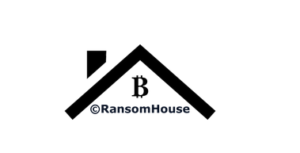Domain-Protect – Protect Against Subdomain Takeover
Protect Against Subdomain Takeover
- scans Amazon Route53 across an AWS Organization for domain records vulnerable to takeover
- vulnerable domains in Google Cloud DNS can be detected by
subdomain detection functionality
Scans Amazon Route53 to identify:
- Alias records for CloudFront distributions with missing S3 origin
- CNAME records for CloudFront distributions with missing S3 origin
- ElasticBeanstalk Alias records vulnerable to takeover
- ElasticBeanstalk CNAMES vulnerable to takeover
- Registered domains with missing hosted zones
- Subdomain NS delegations vulnerable to takeover
- S3 Alias records vulnerable to takeover
- S3 CNAMES vulnerable to takeover
- Vulnerable CNAME records for Azure resources
- CNAME records for missing Google Cloud Storage buckets
optional additional check
Turned off by default as it may result in Lambda timeouts for large organisations
- A records for missing storage buckets, e.g. Google Cloud Load Balancer with missing backend storage
To enable, create this Terraform variable in your tfvars file or CI/CD pipeline:
lambdas = ["alias-cloudfront-s3", "alias-eb", "alias-s3", "cname-cloudfront-s3", "cname-eb", "cname-s3", "ns-domain", "ns-subdomain", "cname-azure", "cname-google", "a-storage"]
options
- scheduled lambda functions with email and Slack alerts, across an AWS Organization, deployed using Terraform
- manual scans run from your laptop or CloudShell, in a single AWS account
notifications
- Slack channel notification per vulnerability type, listing account names and vulnerable domains
- Email notification in JSON format with account names, account IDs and vulnerable domains by subscribing to SNS topic
requirements
- Security audit account within AWS Organizations
- Security audit read-only role with an identical name in every AWS account of the Organization
- Storage bucket for Terraform state file
- Terraform 1.0.x
usage
- replace the Terraform state S3 bucket fields in the command below as appropriate
- for local testing, duplicate terraform.tfvars.example, rename without the .example suffix
- enter details appropriate to your organization and save
- alternatively enter Terraform variables within your CI/CD pipeline
terraform init -backend-config=bucket=TERRAFORM_STATE_BUCKET -backend-config=key=TERRAFORM_STATE_KEY -backend-config=region=TERRAFORM_STATE_REGION
terraform workspace new dev
terraform plan
terraform apply
AWS IAM policies
For least privilege access control, example AWS IAM policies are provided:
- domain-protect audit policy – attach to domain-protect audit role in every AWS account
- domain-protect audit trust relationship for domain-protect audit role in every AWS account
- domain-protect audit trust relationship with External ID for domain-protect audit role in every AWS account
- domain-protect deploy policy – attach to IAM group or role assumed by CI/CD pipeline
adding new checks
- create a new subdirectory within the terraform-modules/lambda/code directory
- add Python code file with same name as the subdirectory
- add the name of the file without extension to
var.lambdasin variables.tf - add a subdirectory within the terraform-modules/lambda/build directory, following the existing naming pattern
- add a .gitkeep file into the new directory
- update the .gitignore file following the pattern of existing directories
- apply Terraform
adding notifications to extra Slack channels
- add an extra channel to your slack_channels variable list
- add an extra webhook URL or repeat the same webhook URL to your slack_webhook_urls variable list
- apply Terraform
testing
- use multiple Terraform workspace environments, e.g. dev, prd
- use the
slack_channels_devvariable for your dev environment to notify a test Slack channel - for new subdomain takeover categories, create correctly configured and vulnerable domain names in Route53
- minimise the risk of malicious takeover by using a test domain, with domain names which are hard to enumerate
- remove any vulnerable domains as soon as possible
ci/cd
- infrastructure has been deployed using CircleCI
- environment variables to be entered in CircleCI project settings:
| ENVIRONMENT VARIABLE | EXAMPLE VALUE / COMMENT |
|---|---|
| AWS_ACCESS_KEY_ID | using domain-protect deploy policy |
| AWS_SECRET_ACCESS_KEY | – |
| TERRAFORM_STATE_BUCKET | tfstate48903 |
| TERRAFORM_STATE_KEY | domain-protect |
| TERRAFORM_STATE_REGION | us-east-1 |
| TF_VAR_org_primary_account | 012345678901 |
| TF_VAR_security_audit_role_name | not needed if “domain-protect-audit” used |
| TF_VAR_external_id | only required if External ID is configured |
| TF_VAR_slack_channels | [“security-alerts”] |
| TF_VAR_slack_channels_dev | [“security-alerts-dev”] |
| TF_VAR_slack_webhook_urls | [“https://hooks.slack.com/services/XXX/XXX/XXX”] |
- to validate an updated CircleCI configuration:
docker run -v `pwd`:/whatever circleci/circleci-cli circleci config validate /whatever/.circleci/config.yml
limitations
- this tool cannot guarantee 100% protection against subdomain takeover
- it currently only scans Amazon Route53, and only checks a limited number of takeover types
- vulnerable domains in Google Cloud DNS can be detected by Domain Protect for GCP
Download Domain-Protect
If you like the site, please consider joining the telegram channel or supporting us on Patreon using the button below.




